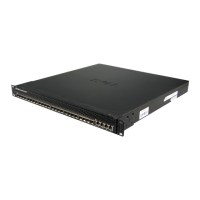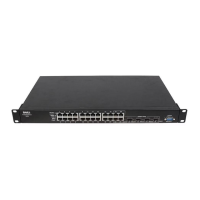System Management Commands 1109
Example
Following is an example of using the telnet command to connect to 176.213.10.50.
console#telnet 176.213.10.50
Esc U sends telnet EL
traceroute
Use the traceroute command in Privileged EXEC mode to discover the IP routes that packets
actually take when traveling to their destinations.
You can use traceroute command in either of two formats:
• You can specify the IP address and hostname in the command. The
traceroute
{ipaddress|hostname}
command sets the parameters to their default values.
•You can enter
traceroute
to without specifying the IP address and hostname, and specify
values for the traceroute parameters.
Syntax
traceroute [ ip | ipv6 ]
ipaddress
|
hostname
[ initTtl
initTtl
] [ maxTtl
maxTtl
] [ maxFail
maxFail
] [ interval
interval
] [ count
count
] [ port
port
] [ size
size
]
•
ipaddress
— Valid IP address of the destination host.
•
hostname
— Hostname of the destination host (Range: 1–158 characters).
•
initTtl
— The initial time-to-live (TTL); the maximum number of router hops between the
local and remote system (Range: 0–255).
•
maxTtl
— The largest TTL value that can be used (Range:1–255).
•
maxFail
— Terminate the traceroute after failing to receive a response for this number of
consecutive probes (Range: 0–255).
•
interval
— The time between probes in seconds (Range: 1–60 seconds).
•
count
— The number of probes to be sent at each TTL level (Range:1–10).
•
port
— The destination UDP port of the probe. This should be an unused port on the remote
destination system (Range: 1–65535).
•
size
— The size, in bytes, of the payload of the Echo Requests sent (Range: 0–65507 bytes).
uucp Unix-to-Unix Copy Program 540
whois Nickname 43
www World Wide Web 80
Keyword Description Port Number

